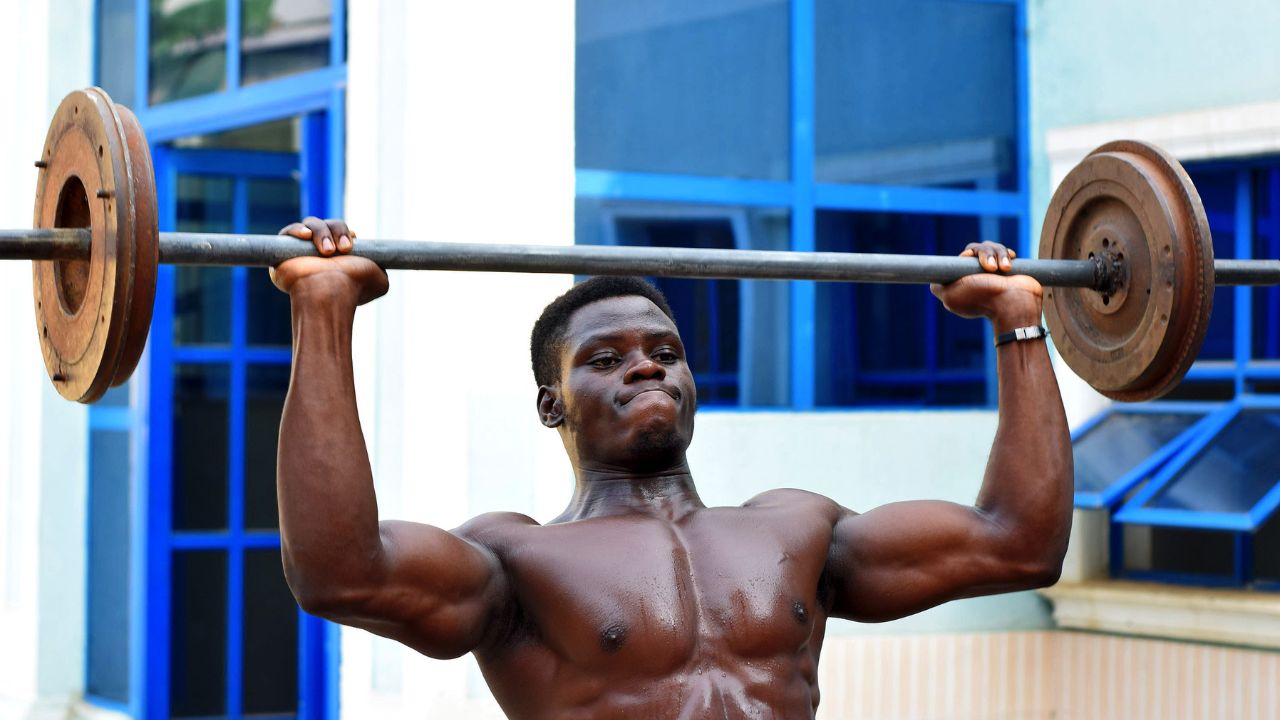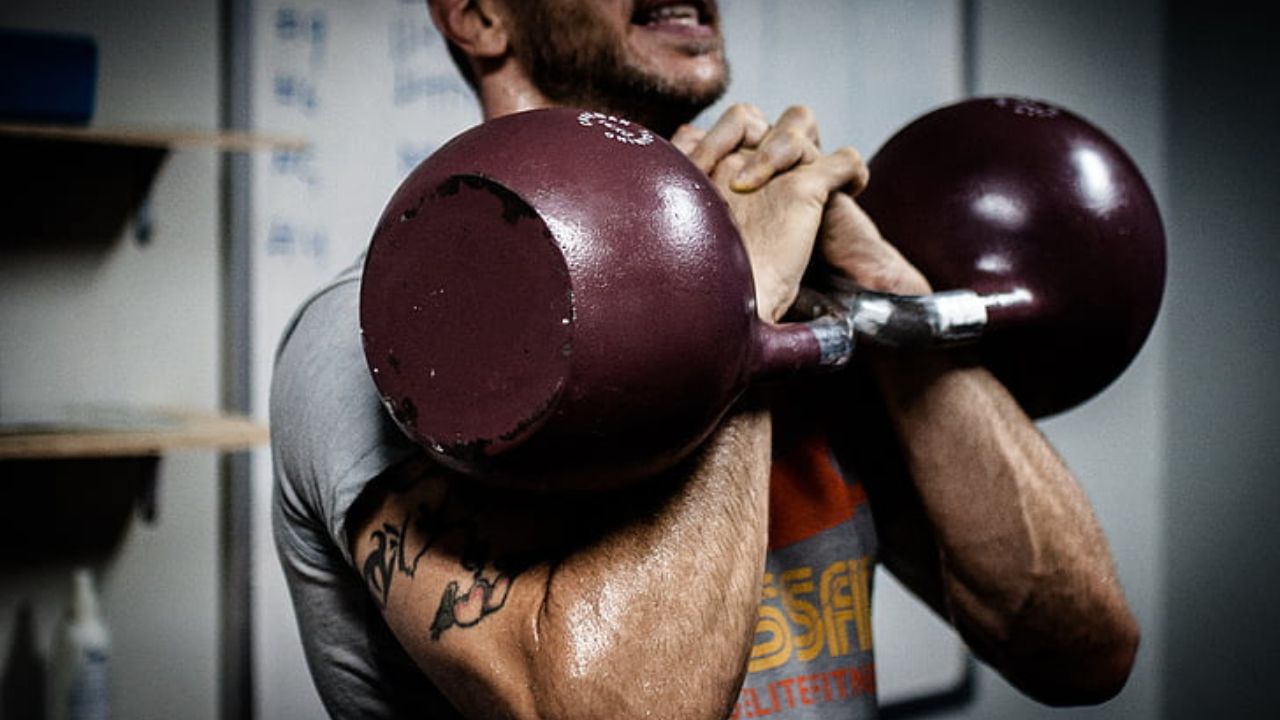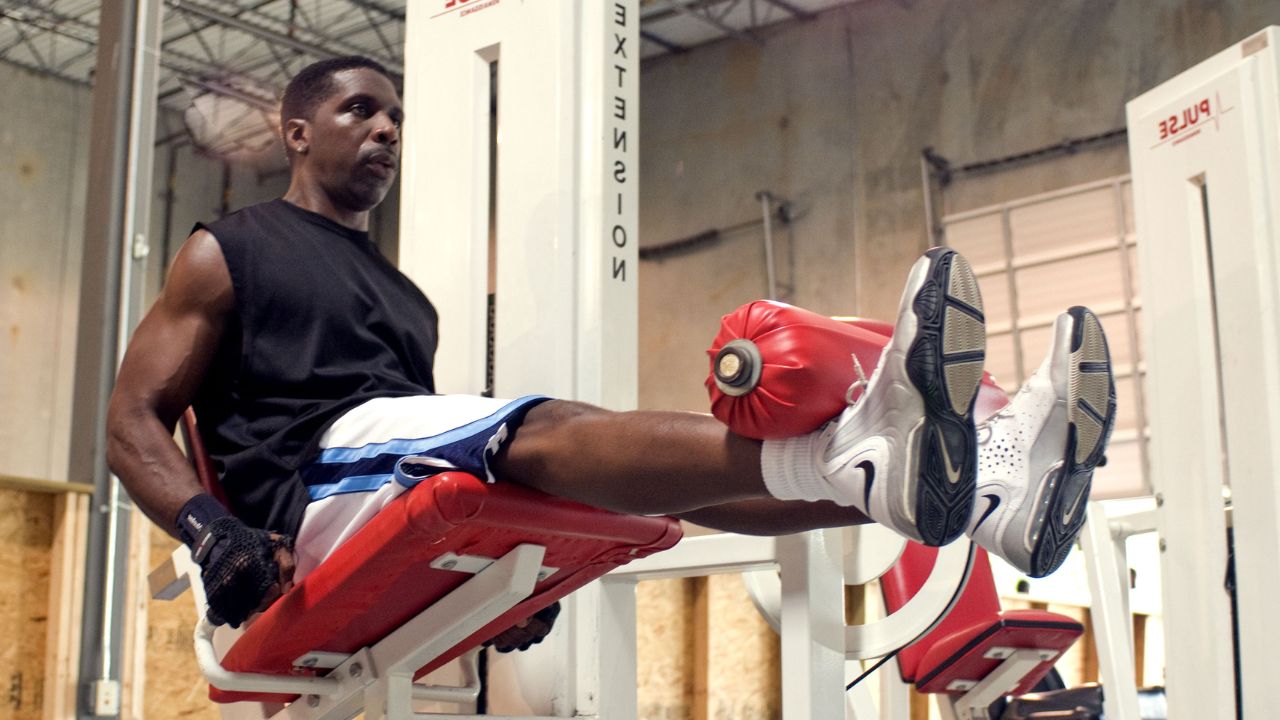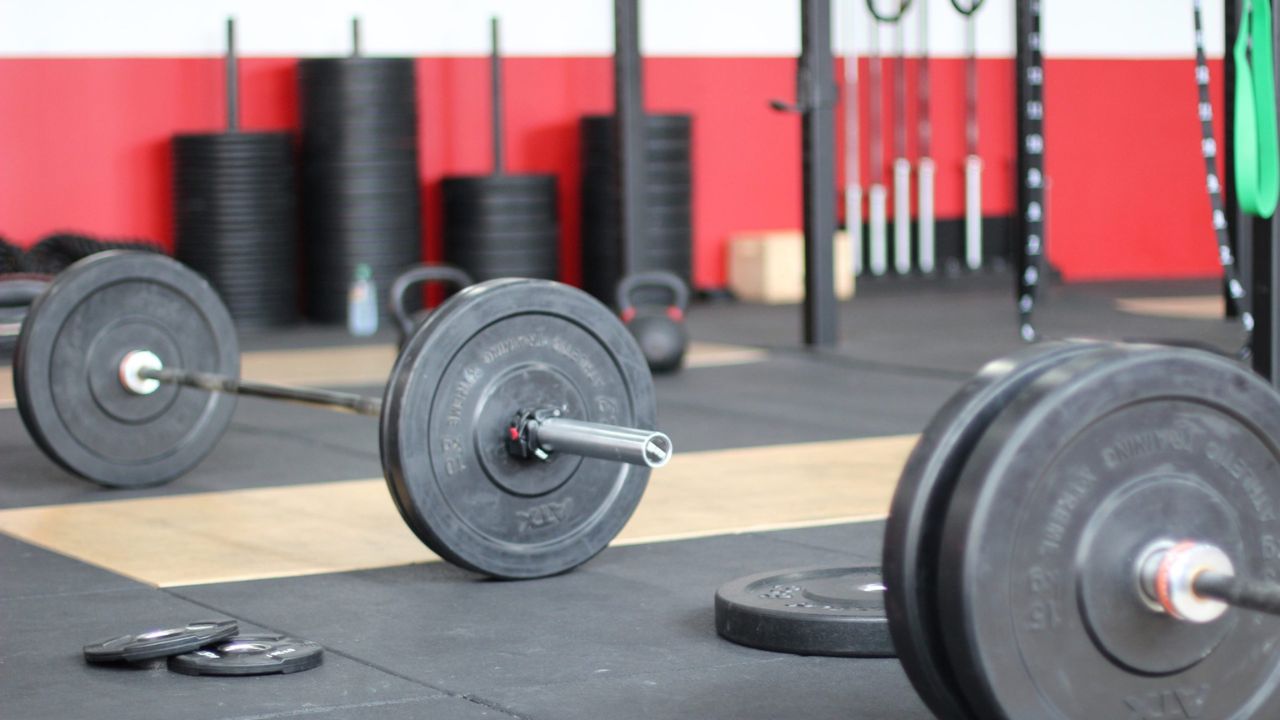
Are you tired of being misled by fitness myths? Get ready to break free from the misconceptions that have been holding you back.
In this article, we'll debunk the top 10 fallacies about strength and conditioning training. Say goodbye to the false belief that lifting weights will make women bulky, or that cardio is the only way to burn fat.
It's time to embrace the truth and discover the freedom that comes with evidence-based fitness knowledge.
Myth: Lifting Weights Makes Women Bulky
Don't worry, lifting weights won't make you bulky.
It's time to debunk one of the most common weightlifting misconceptions: the idea that women will become bulky if they lift weights. This stereotype isn't only outdated but also unsupported by scientific evidence. In fact, women have lower levels of testosterone compared to men, which makes it difficult for them to develop large, bulky muscles.
Instead, weightlifting can help women achieve a toned and sculpted physique. Incorporating strength training into your fitness routine can increase lean muscle mass, boost metabolism, and improve bone density. It can also enhance overall strength and functional fitness, allowing you to perform daily activities with ease and confidence.
Myth: Cardio Is the Only Way to Burn Fat
You can burn fat through various methods, not just cardio. While cardio exercises like running, cycling, and swimming are effective for burning calories and shedding pounds, they aren't the only way to achieve your weight loss goals. In fact, incorporating alternative fat burning methods into your fitness routine can provide additional benefits and help you reach your desired results faster.

Here are three reasons why strength training should be considered as a valuable tool for weight loss:
Increased muscle mass: Strength training builds lean muscle, which can boost your metabolism and help you burn more calories throughout the day.
Afterburn effect: High-intensity strength training sessions can lead to an increased calorie burn even after your workout is over, thanks to the excess post-exercise oxygen consumption (EPOC) effect.
Improved body composition: Strength training not only burns fat but also helps to shape and tone your muscles, resulting in a more defined and sculpted physique.
Incorporating strength training into your fitness routine can provide a well-rounded approach to weight loss and offer numerous benefits beyond just burning fat. So don't limit yourself to cardio alone - explore the world of strength training and unlock your full fat-burning potential.
Myth: Strength Training Is Only for Young People
Strength training isn't just for young people; it can benefit individuals of all ages. One of the most common misconceptions about age and fitness is that strength training is only for the younger generation. However, research shows that older adults can reap significant benefits from incorporating strength training into their exercise routine.
As we age, our muscle mass naturally declines, which can lead to decreased strength and mobility. But, engaging in regular strength training exercises can help counteract this process. Not only does strength training help to build and maintain muscle mass, it also improves bone density, enhances balance and coordination, and reduces the risk of falls and injuries.

In fact, studies have shown that older adults who engage in strength training have better overall physical function and are better able to perform daily activities independently. So, don't let age be a barrier to reaping the benefits of strength training; it's never too late to start.
Myth: You Can Spot Reduce Fat in Specific Areas
The truth is, you can't spot reduce fat in specific areas. Despite what some fitness gurus may claim, there's no magic exercise or secret technique that can target fat loss in a specific part of your body. Here's why:
Body Fat Distribution: Your body determines where fat is stored based on genetics and hormones. This means that spot reduction is simply not possible.
Overall Fat Loss: To reduce fat in specific areas, you need to focus on overall fat loss. This can be achieved through a combination of a healthy diet, regular cardio exercises, and strength training.
Muscle Development: Strength training can help build muscle, which in turn increases your metabolism and helps your body burn more calories. However, it won't specifically reduce fat in a particular area.
Myth: More Is Always Better When It Comes to Training
When it comes to training, it's important to remember that more isn't always better. While pushing yourself to the limit can be beneficial, overtraining can lead to negative consequences such as increased risk of injury, decreased performance, and burnout.
Quality over quantity is key - focus on proper form, intensity, and recovery to maximize your training results and avoid the pitfalls of overdoing it.

Quality Over Quantity
To achieve optimal results in your training regimen, focus on the quality of your workouts rather than the quantity. It's a common misconception that the more time you spend in the gym, the better your results will be. However, this isn't necessarily the case. In fact, training intensity and effective workouts are much more important factors in achieving your fitness goals.
Here are three reasons why quality should be prioritized over quantity:
Reduced risk of injury: By focusing on the quality of your workouts, you can ensure proper form and technique, reducing the risk of injury. Pushing yourself too hard and doing excessive repetitions can lead to overuse injuries and burnout.
Increased efficiency: Quality workouts allow you to maximize your time and effort. By focusing on exercises that target multiple muscle groups and incorporating high-intensity intervals, you can achieve better results in less time.
Progressive overload: Quality workouts focus on gradually increasing the intensity and difficulty of your exercises over time. This progressive overload is crucial for continuous improvement and preventing plateaus in your fitness journey.
Avoiding Overtraining Risks
Don't fall into the trap of believing that pushing yourself to do more is always better when it comes to training; it can actually increase your risk of overtraining. While it's important to challenge yourself and push your limits, there's a fine line between pushing for progress and pushing too hard.
Overtraining occurs when you exceed your body's ability to recover from the stress of exercise, leading to decreased performance, increased risk of injury, and even negative effects on your overall health. To avoid overtraining, it's crucial to prioritize rest and recovery in your strength training routine.

This includes incorporating regular rest days, getting enough sleep, and fueling your body with proper nutrition. Rest and recovery allow your muscles to repair and rebuild, ultimately leading to better progress and reduced risk of overtraining.
Myth: You Need Expensive Equipment to Get Results
You can achieve great results without expensive equipment. Many people believe that they need fancy machines and pricey gadgets to see progress in their strength and conditioning training. However, this is simply not true. There are affordable alternatives for strength training that can be just as effective, if not more so, than expensive equipment. Here are three examples:
Resistance bands: These elastic bands are inexpensive and versatile. They can be used for a wide range of exercises, such as bicep curls, squats, and even chest presses. They provide resistance throughout the entire range of motion, helping to improve strength and muscle tone.
Bodyweight exercises: Your own bodyweight can be a powerful tool for strength training. Exercises such as push-ups, squats, lunges, and planks can target multiple muscle groups at once and can be done anywhere, without the need for equipment.
Dumbbells: While dumbbells may require a small investment, they're still more affordable than large, complex machines. Dumbbell exercises like shoulder presses, rows, and deadlifts can effectively build strength and muscle mass.
Myth: Strength Training Will Make You Inflexible
Lifting weights and doing strength training exercises actually improves flexibility, contrary to the myth that it will make you inflexible. Many people believe that strength training only focuses on building muscle mass and neglects flexibility. However, this is a common misconception.
Strength training actually increases the range of motion in your joints and helps to improve your overall flexibility. When you perform exercises such as squats, lunges, and deadlifts, you're working multiple muscle groups simultaneously, which in turn improves your flexibility.

Additionally, strength training helps to prevent muscle imbalances and tightness, which can lead to decreased flexibility. So, don't be afraid to incorporate strength training into your fitness routine, as it provides not only strength gains but also flexibility benefits.
Myth: Women Should Avoid Heavy Weights
You may have heard the myth that women should avoid heavy weights, but that couldn't be further from the truth. In fact, weightlifting offers numerous benefits for women, including increased strength, improved bone density, and enhanced metabolism.
Contrary to popular belief, lifting heavy weights won't cause women to bulk up like bodybuilders. Instead, it helps to sculpt and define muscles, giving you a lean and toned physique.
Just remember to prioritize proper form and technique to maximize the benefits and minimize the risk of injury.
Weightlifting Benefits for Women
Avoiding heavy weights is a myth that women should debunk when it comes to weightlifting benefits. Weightlifting offers numerous advantages for women, both physically and mentally. Here are three reasons why women should embrace heavy weights:
Increased strength and muscle mass: Contrary to popular belief, weightlifting doesn't make women bulky. Instead, it helps build lean muscle, leading to a stronger and more toned physique.
Improved bone density: Weightlifting is an excellent way to strengthen bones and reduce the risk of osteoporosis. It puts stress on the skeletal system, stimulating bone growth and enhancing overall bone health.

Enhanced metabolism: Lifting heavy weights can boost your metabolism, allowing you to burn more calories even at rest. This can be especially beneficial for women looking to lose weight or maintain a healthy body composition.
Myths About Muscle Growth
Don't believe the misconception that women should steer clear of heavy weights when it comes to muscle growth. Many people wrongly assume that women will bulk up and develop a masculine physique if they lift heavy weights. However, this is simply not true.
Women have lower levels of testosterone compared to men, which makes it difficult for them to build bulky muscles. In fact, lifting heavy weights can actually help women achieve a toned and defined physique.
Another common myth is that a high protein diet is necessary for muscle growth. While protein is important for muscle repair and growth, studies have shown that excessive protein consumption doesn't lead to additional muscle growth.
Additionally, the myth that muscle soreness indicates muscle growth is also false. Muscle soreness is simply a sign that your muscles are adapting to a new stimulus, but it isn't necessarily an indicator of muscle growth.
When it comes to strength and conditioning training, it's crucial for women to prioritize proper form and not shy away from lifting heavy weights. Contrary to the myth that women should avoid heavy weights, incorporating them into your workout routine can have numerous benefits. Here's why technique and injury prevention are so important:
Efficiency: Using proper form maximizes the effectiveness of your exercises, allowing you to target specific muscles and achieve optimal results.

Injury Prevention: Proper technique reduces the risk of injury by ensuring that your muscles and joints are properly aligned and supported during each movement.
Strength Development: Lifting heavy weights challenges your muscles, promoting strength and muscle growth over time. By gradually increasing the load, you can progressively improve your strength and reach new fitness goals.
Myth: Strength Training Is Not Necessary for Endurance Athletes
You might think that strength training isn't necessary for endurance athletes, but this is a common misconception. In fact, incorporating strength training into an endurance training program can provide numerous benefits that can enhance performance and reduce the risk of injury.
Endurance training primarily focuses on cardiovascular fitness and improving the body's ability to sustain physical activity for extended periods. However, strength training can help to improve muscular strength and power, which are crucial for endurance athletes.
By incorporating exercises that target specific muscle groups used during endurance activities, athletes can improve their overall performance and efficiency. Additionally, strength training can help to improve running economy, increase lactate threshold, and prevent muscle imbalances.
It's recommended that endurance athletes include strength training sessions two to three times a week for optimal training frequency. So, don't overlook the importance of strength training in your endurance training regimen.
Myth: It's Impossible to Build Muscle and Lose Fat Simultaneously
Building muscle and losing fat simultaneously is a myth that many people believe, but the truth is that it's indeed possible to achieve both goals through proper training and nutrition. Contrary to popular belief, you can build muscle while losing fat with the right strategies.

Here are three effective training strategies to help you achieve this:
Resistance Training: Incorporating strength training exercises into your workout routine helps stimulate muscle growth and increase metabolism, leading to fat loss.
High-Intensity Interval Training (HIIT): This type of training alternates between intense bursts of exercise and short recovery periods, which helps burn calories and build lean muscle simultaneously.
Balanced Nutrition: Consuming a diet rich in lean protein, healthy fats, and complex carbohydrates provides the necessary nutrients for muscle growth and fat loss.
Frequently Asked Questions
Can Strength Training Help Improve Flexibility?
Strength training can indeed help improve flexibility. By increasing muscle strength and promoting joint mobility, strength training can enhance your overall range of motion, allowing for greater flexibility and improved performance in various activities.
Is It True That Women Should Avoid Heavy Weights?
No, it's not true that women should avoid heavy weights. Weightlifting benefits for women include increased strength, bone density, and metabolism. Embrace the importance of strength training and enjoy the freedom to challenge yourself.
Is Strength Training Necessary for Endurance Athletes?
Strength training is necessary for endurance athletes. While cardio is important, strength training helps improve muscular endurance, power, and injury prevention. Cross training, combining both types of training, offers the best results for endurance athletes.

Can You Build Muscle and Lose Fat at the Same Time?
Can you really have your cake and eat it too? Yes, you can build muscle and lose fat simultaneously. The effectiveness of concurrent training lies in a balanced nutrition plan, targeted workouts, and consistency.
Do You Need Expensive Equipment to Get Results From Strength Training?
You don't need expensive equipment to get results from strength training. Affordable alternatives like bodyweight exercises can be just as effective in building strength and conditioning your body.
 Mobility trainingHome Fitness RecoverySports Injury PreventionPersonal Physical TherapyOrthopedic SolutionsPrivacy PolicyTerms And Conditions
Mobility trainingHome Fitness RecoverySports Injury PreventionPersonal Physical TherapyOrthopedic SolutionsPrivacy PolicyTerms And Conditions
